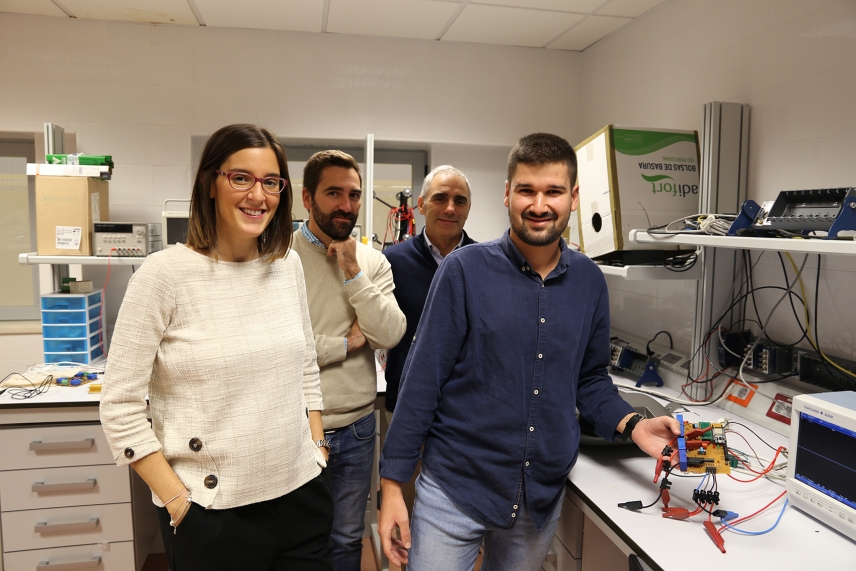 The Electronic and Computer Engineering Department research group made up of Ricardo Medina, Manuel Alonso, Aurora Gil, Antonio Moreno and Eduardo Cañete have laid the foundations for the development of these improvements by means of design and low cost sensor building allowing for the measurement of electrical current quality on each device in order to implement these features in appliances as well as any device connected to electronic current. What is more, this system can also be expanded to other settings outside of the home such as industrial settings or street lighting.
The Electronic and Computer Engineering Department research group made up of Ricardo Medina, Manuel Alonso, Aurora Gil, Antonio Moreno and Eduardo Cañete have laid the foundations for the development of these improvements by means of design and low cost sensor building allowing for the measurement of electrical current quality on each device in order to implement these features in appliances as well as any device connected to electronic current. What is more, this system can also be expanded to other settings outside of the home such as industrial settings or street lighting.
What is revolutionary about this research is twofold. In the first place, a low cost sensor makes it easier for appliance manufacturers to include these sensors in their devices, meaning these advantages would reach most of the general public. In the second place, this sensor is able to instantly upload the individual measurement results to the cloud, where the information can be managed and made accessible to users. In this way, the process is streamlined and made more efficient.
The sensor was developed on the basis of an integrated circuit that was already on the market. A subsidiary circuitry was added that can adapt voltage waves and current. After adjusting internal parameters and calibrating the integrated circuit, measurements are able to be revised and later extracted, managed and uploaded to the cloud by a microcontroller, in something like preprocessed data that can later be completed on the cloud.
The combination of circuit and microprocessor carried out by this research group optimizes the process to a greater degree than if it were entirely programmed into a microprocessor.
This work opens the door to new applications, not only focused on measuring, but also on acting upon the load and giving feedback to the device, which would be constantly informed about the voltage conditions of the power provided.
The progressive smartness of appliances goes along with user-friendliness and certifying what real issues have transpired in case of a device malfunction (if it is a result of load quality or of simply a faulty device) as well as a sustainable resource approach due to the prevention of malfunction based on measured data.
Alonso-Rosa, M; Gil-deCastro, A; Medina-Gracia, R; Moreno-Muñoz, A; Cañete-Carmona, E. Novel Internet of Things Platform for In-Building Power Quality Submetering. APPLIED SCIENCES – BASEL (8):1320 · August 2018 DOI: 10.3390/app8081320


